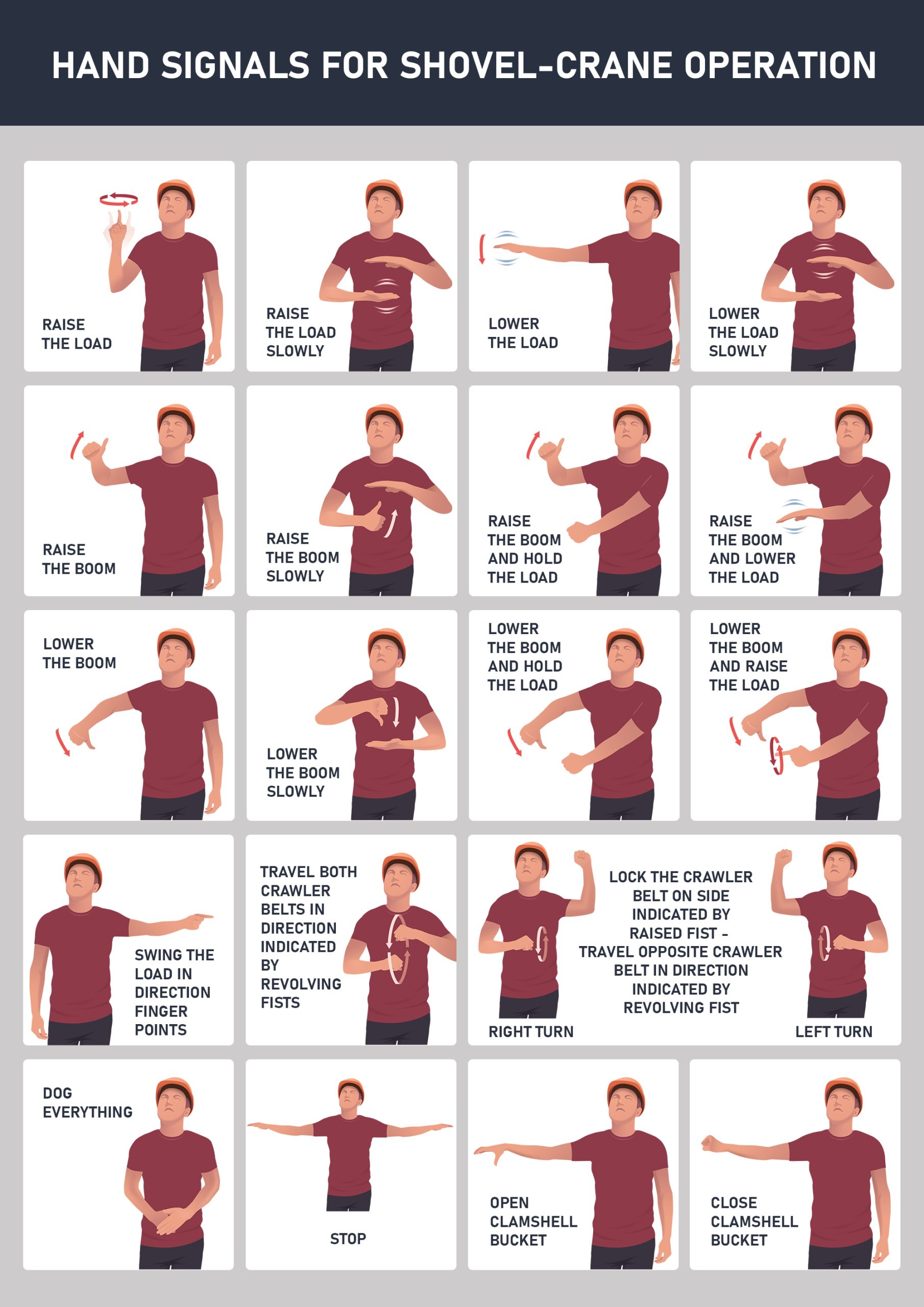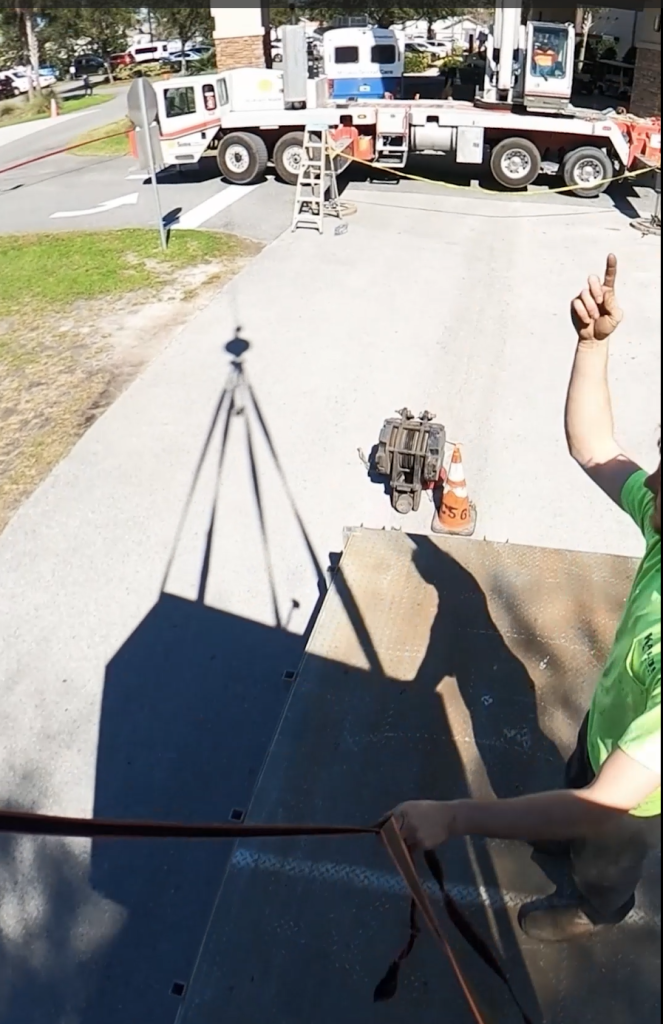Get Tech Tips
Subscribe to free tech tips.
Crane Considerations for RTU Installation

Sandhill cranes are protected by the Migratory Bird Treaty Act (MBTA) of 1918. Non-migratory subspecies, like the ones we see in Florida, also have special protections, and hurting a crane can land you in jail or put you thousands of dollars in debt. (Plus, it’s just plain awful.) For that reason, we need to do our due diligence as HVAC professionals to make sure we avoid doing any harm to local wildlife—especially protected birds—when installing RTUs and other HVAC systems.
That’s the tech tip. Oh, wait, not those cranes?
In all seriousness, rooftop units don’t just get to the tops of buildings by themselves, and your average scissor lift and biceps definitely aren’t cut out for the job. Whenever we have commercial projects where we install and replace RTUs, we rent cranes to hoist those bad boys up onto rooftops.
As with using any piece of heavy machinery, safe crane use requires a lot of forethought and careful attention to your surroundings.
Preparation
When picking a crane, our attention should be on the job site—where is it? What hazards are present on site? What kind of damage can a crane potentially do if our people don’t have the proper training or map of the job site?
Location
In an RTU class for our Kalos techs, it was once said that “Location is one of the most important matters—just like real estate.”
That’s 100% right. When we pick a spot for our crane, we want to avoid hazards on the job site. Grease traps are a huge safety risk when we install RTUs on top of large commercial facilities, especially those that deal with food preparation. We definitely don’t want to operate a crane above one and cause severe injury and property damage. Operating a crane on top of drainage systems and soft ground may also have catastrophic consequences. Be mindful of power lines as well.
Location doesn’t just stop at the job site, either. Check the local facilities around the job site. You will need to file a permit with the US Federal Aviation Administration (FAA) if you plan to use the crane within three nautical miles (~3.4 miles) of an airport. There may also be special cases where you’ll need to file a permit if you operate a crane within five nautical miles (~5.75 miles) if the crane is in the direct takeoff path.
Keep in mind that nautical/aerial miles are around 800 feet longer than the miles measured by your car odometer. It’s better to be safe than sorry, so err on the side of caution and be diligent about filing FAA permits.
Weather
Picture this: you’re in a storm with heavy winds and lightning, and you’re standing near a giant metal object that’s taller than most of the buildings nearby. What could possibly go wrong?
I don’t think I need to answer that.
Lightning and high-wind conditions are serious threats to any human who is outdoors, let alone someone who’s operating a piece of several-story-high heavy machinery. Yes, renting cranes is expensive, but trying to squeeze a crane pick in before a storm or high winds is unsafe, and nothing is more important than your life on the job.
Spreader bars
RTUs are massive, and if you were to pick one up by the center with nothing to distribute the load, the rigging would probably cut into the unit when you’re hoisting it. Spreader bars help distribute the load more evenly, improving stability and reducing the risk of damage to the unit.

You may not need a spreader bar for a 5-ton system. A 30-ton system is a completely different story. Make sure you’re aware of the unit size so that it can receive appropriate support.
Safe Operation
Anyone operating a crane should be certified through the National Commission for the Certification of Crane Operators (NCCCO). The certification pathways teach you not only how to operate a crane and use the proper signals but also how to inspect it for safety concerns before lifting anything off the ground or rooftop.
Rigging
Rigging is how you connect a load to the crane. The goal of rigging is to secure the load without damaging it.
Keep in mind that loads consist of the weight of the RTU and the rigging, including the spreader bar (which is a staple of RTU hoisting). The rigging can be a few thousand pounds by itself, so don’t underestimate its effect on the total load.
NCCCO certification pathways also teach you how to inspect the rigging for hazardous conditions. Crane operators should inspect the rigging, but safety isn’t something I’d want to place in the hands of someone else. Not to mention, you don’t always receive the crane and rigging from the rental facility in the best possible condition and may come across hazards like damaged straps.

OSHA Standard 1926.251 has a comprehensive list of safety violations to look out for. Note that this OSHA standard is in Subpart H for materials handling; there is a separate standard for rigging related to steel erection in Subpart R.
However, and probably more commonly, you may also find issues with the old RTUs (in the case of changeouts). It’s dangerous to assume that everything is fine and ready to go as soon as the crane is in position. Common issues we’ve come across at Kalos when rigging old units include (but are certainly not limited to):
- Ducts are still attached to the old unit, not the curb
- Lags or bolts corroded
- Tiedowns missed or not removed
- Units getting stuck on the curb
Signaling
Signaling and verbal commands are the main ways crane operators receive direction. Since there are plenty of opportunities for miscommunication, signalers will also need NCCCO certification to make sure they are well-versed in the proper protocols to avoid confusion.
For example, “load down” and “boom down” are not the same thing and will yield different results. The load is on a vertical axis, so raising or lowering it means that the cable will only move the load up or down. When you lower or raise the boom, the load will cover some horizontal distance as well, not just vertical.
If you’re on the ground, working during the day, and in plain sight of the operator, hand signals will be your go-to method of communication. We use the guide below to train the commercial workers at Kalos:


When you’re not using hand signals, such as when it’s dark out or you’re out of the crane operator’s line of sight, you’ll likely rely on radio communication. Again, this is where using the correct terminology is really important. “Cable down” or “load down” will place the load in a different location than “boom down.”
Crane use probably isn’t the first thing that comes to mind when we talk about RTUs, but its importance shouldn’t be underestimated. While commercial techs may not be the people physically operating the cranes, they’ll likely be involved in preparing the old equipment for removal, rigging, and possibly signaling. It’s hazardous work, but most of the risks can be mitigated if you’re aware of your surroundings and know proper safety procedures like the back of your hand.
Of course, this tech tip is just a basic overview of crane use and doesn’t dive into the nuances of proper rigging and every possible safety measure or violation. If you want to learn more about how to become a certified rigger or signalperson, you can visit NCCCO’s website and click on any of the links to certification criteria to learn more.











Comments
To leave a comment, you need to log in.
Log In